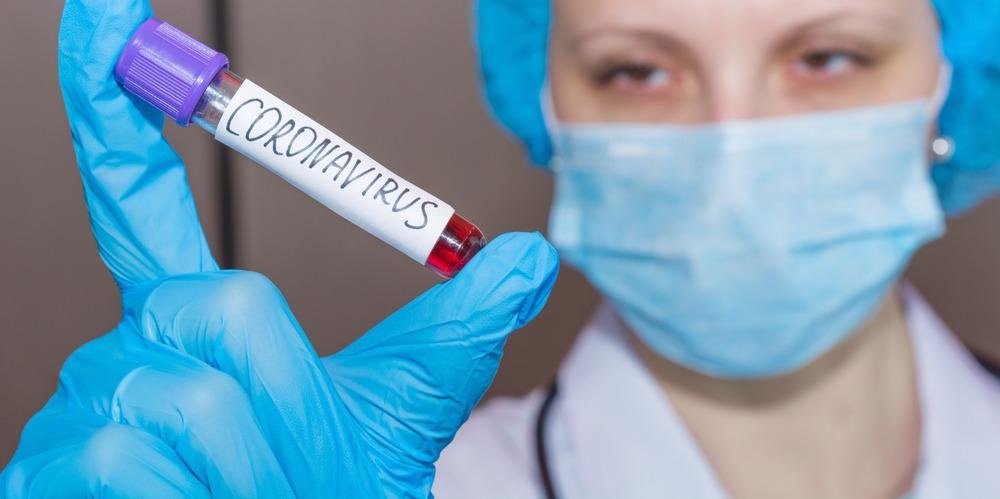
Image Credit: BERMIX STUDIO/Shutterstock.com
Promising new drugs to potentially treat COVID-19 have been identified by a new study using X-ray screening. A study published this month in the journal Science reveals that 37 compounds have been identified as binding to SARS-CoV-2 main protease (Mpro), responsible for viral replication.
Further analysis revealed that one peptidomimetic and six nonpeptidic compounds out of these 37 demonstrated antiviral activity at nontoxic concentrations. In addition, two allosteric binding sites were discovered and may prove to be effective targets for drug development against SARS-CoV-2. The evidence found by this new study may be vital to developing an effective therapeutic against COVID-19, for which there is currently no effective drug to directly treat the disease.
Better Treatment Needed Alongside Vaccines
As of May 2021, there have been more than 150 million confirmed cases of COVID-19 and over 3 million deaths, according to the World Health Organization’s Weekly Epidemiological Update. While some global regions report a steady fall in these figures as their vaccine roll-outs pick up speed, others such as the South-East Asia region continue to report increases in new cases and deaths.
Vaccination is only one strategy for combating the global pandemic. Alongside other preventative measures, such as lockdowns and behavioral changes, scientists are also developing new therapeutics to treat the illness. Fortunately, scientists were able to rapidly develop safe and effective vaccinations to prevent infection of the COVID-19 virus. There is now also hope for significant improvement in how the disease is treated.
Targeting the Proteins Responsible for Viral Replication
Viruses cannot replicate without the help of the host. To replicate and proliferate within an infected person, the virus introduces its genetic material into the host’s cells and forces them to reproduce this material, creating new viruses. Proteins are vital for this process.
The virus’s main protease, in the case of COVID-19, the SARS-CoV-2 main protease (Mpro), underpins replication activity. Within a human host, the virus’s protease cuts through the host’s chains of proteins to form the building blocks of a new virus (identical to the invading virus). Therefore, in blocking the main protease, the replication activity of the virus that underlies its capacity to cause illness in the host is prevented.
Scientists have been exploring how to block the protease to inactivate the virus. Now, in a study using X-ray screening, several compounds have been identified that may be fundamental in developing a therapy capable of blocking the protease.
Finding Active Compounds that Block the Protease
The new research, led by German Electron Synchrotron (DESY), performed a large-scale X-ray crystallographic screening of around 6,000 already known active substances currently used in therapeutics to treat other diseases.
The study used the PETRA III X-ray light source at DESY to produce the three-dimensional structural imagery of the proteins with atomic precision. The high-resolution imagery allowed scientists to visualize thousands of compounds to investigate how they dock onto the virus’s main protease. Molecules that fit into the protease's binding center can act on it and even block it.
The team used robotic equipment to process over 7,000 measurements in roughly three minutes each, an unprecedented speed for this kind of analysis. Quickly, the team was able to highlight compounds that may have potential with automated data analysis. Within a short period, the high-throughput method churned out 37 active substances that successfully bind with the virus’s main protease.
Because the scientists only explored compounds that are already being used to treat other diseases in humans, the candidates their research identified will benefit from a shorter journey to gaining approval for use if successful further down the line. Usually, preclinical and clinical trials are required to establish safety profiles of new therapeutic candidates. In this case, however, much of the work to demonstrate the safety of the molecule in humans has already been done.
Finally, researchers at the Bernhard Nocht Institute for Tropical Medicine further analyzed this set of 37 active substances, investigating which ones could inhibit or prevent virus replication. They also explored their compatibility with host cells. The results of this investigation reduced the number of compounds from 37 to just seven, with two being determined of particular interest.
Preclinical trials are being planned to further investigate the compounds identified by this research to potentially develop a new COVID-19 drug. This research may ultimately lead to an effective direct therapeutic for COVID-19, which could result in a better prognosis for those who become infected, particularly for those who are most vulnerable to the more severe symptoms of the virus.
References and Further Reading
Günther, S., et al., 2021. X-ray screening identifies active site and allosteric inhibitors of SARS-CoV-2 main protease. Science, 372(6542), pp.642-646. https://science.sciencemag.org/content/372/6542/642
Corona Inhibitors: X-ray Screening Identifies Promising Drugs for Treatment of COVID-19. SciTechDaily. Available at: https://scitechdaily.com/corona-inhibitors-x-ray-screening-identifies-promising-drugs-for-treatment-of-covid-19/
Weekly epidemiological update on COVID-19 - 4 May 2021. World Health Organization. Available at: https://www.who.int/publications/m/item/weekly-epidemiological-update-on-covid-19---4-may-2021
Disclaimer: The views expressed here are those of the author expressed in their private capacity and do not necessarily represent the views of AZoM.com Limited T/A AZoNetwork the owner and operator of this website. This disclaimer forms part of the Terms and conditions of use of this website.